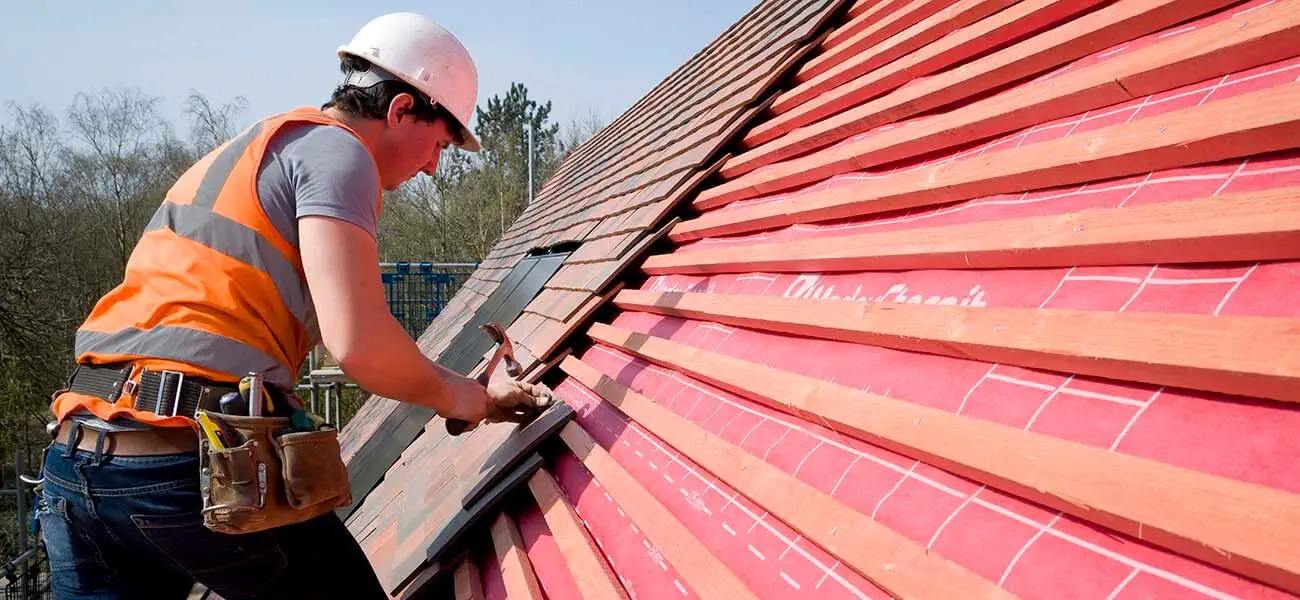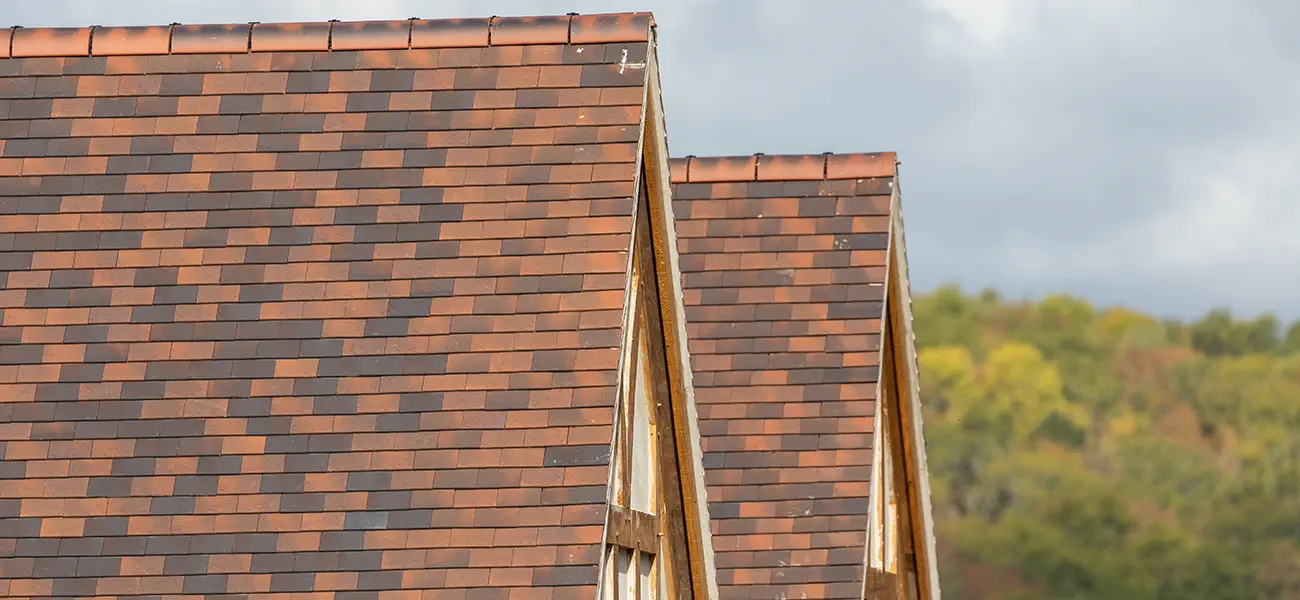Properly securing roof tiles is an important consideration for any homeowner in the UK. While some may think only selectively nailing tiles is sufficient, experts agree that nailing down every tile is the best practice for protecting your roof from wind damage. Credit: Marley Yes, it is recommended to nail down roof tiles in the UK. Nailing provides a secure fixing that resists wind uplift forces. The nailing pattern may vary based on the tile type and roof location. Areas like eaves often require every tile nailed, while other areas may allow nailing every second or third course. Always check manufacturer specifications. Nailing to battens creates a stable base. Some use flexible nails to allow for expansion. Overall, nailing tiles is considered the best practice for UK roofs. In our expert opinion, when installing or replacing a roof in the UK, it is essential to nail down roof tiles. Nailing provides a secure fixing to battens that resist wind uplift forces. The nailing requirements may vary across the roof area based on tile design, roof shape and local wind conditions. Consult manufacturer guidelines and building regulations. We recommend nailing down all roof tiles, with extra care taken at vulnerable areas like eaves, ridges and verges. Properly nailed tiles will withstand UK weather conditions for years to come. Interlocking concrete tiles have a ridge at the top that hooks to provide additional security. But even with this ridge, you should still nail each tile. Fully nail slates over the entire roof, with double nailing at the centre. Most roof tiles, whether aluminium, steel, or copper, attach to roof battens using nails. Ensure each tile is nailed in specific areas like the eaves and up verges, while other areas may have different nailing requirements. The key is ensuring all tiles are securely fixed. A proper fixing calculation should be done to determine the right number of nails for your particular roof and location. Don’t take shortcuts – nailing down every tile in the UK provides the best protection against wind damage. Credit: Marley There are several important UK building regulations that relate to the installation of roof tiles and slates. These help ensure roofs are constructed to the required standards and provide adequate weather protection. Part A of the building regulations deals with structure. This states that you need to properly secure roof coverings to resist wind loads without slipping or lifting. It references BS 5534, the British standard for slating and tiling. BS 5534 provides detailed guidance on fixing requirements, minimum headlap, tile bonding, eaves construction and more. It specifies things like the minimum number of fixings per square metre based on the tile or slate type and the site’s wind zone. Another key regulation is Part L, which covers the conservation of fuel and power. This regulates the thermal performance of roof assemblies, stating they must meet certain U-value requirements. Insulation, tile type and ventilation all play a role in controlling heat loss. There are also regulations around fire safety, drainage, materials, and workmanship that come into play with roof installation. Using accredited products, following manufacturer instructions, and having work completed by qualified roofers are the best ways to comply. Ultimately the building control body assesses that the finished roof meets all the necessary UK building regulations. Getting their approval is important to confirm your roof’s safety and integrity. Failing to properly secure roof tiles can lead to some serious problems that no homeowner wants to deal with. One of the most obvious issues is that loose or unfixed tiles can become dislodged and slide off the roof, especially in windy or stormy weather. This creates a risk of injury to people below as well as potential damage to property like cars, garden furniture etc. It also leaves holes for water ingress. Even if the tiles don’t fall, lifting and rattling in the wind creates annoying noise. It can also gradually degrade the nails, battens and underlay as the tiles rub and move. This accelerates the deterioration of the roof. Inadequate fixing allows tiles to slide out of position over time. The smooth, neat lines of the roof become uneven and messy looking. Gaps open up which again provide access points for rain. Water seeping under loose tiles can lead to rot and decay in the roof structure. This severely shortens the lifespan of rafters, boards and felting. Expensive repairs or even a whole new roof can be the end result. Proper nailing, along with measures like tiling battens and weatherproof underlay, is fundamental to constructing a durable, weather-tight roof. Never overlook this basic requirement if you want your roof to reliably protect your home for decades to come. When it comes to nailing down roof tiles, doing it correctly is essential for lasting performance. Here are some key steps to proper tile fixing: Proper nailing is a roofing fundamental. Follow these guidelines and your tiles will stand firm for decades, come rain or shine. When budgeting your roofing project, don’t overlook the cost of fixing tiles. While nailing itself is straightforward, the right materials add up. All in, nailing down a 20 square roof could cost roughly £1,000-£1,500 in materials and labour. For a larger property, double this. Factor this into your plans and make sure your roof budget allows for proper fixing. Cutting corners on nails, battens, or workmanship could lead to problems later. Proper nailing keeps your roof secure for decades, so view it as a wise investment in your home. Yes, roof tiles should always be nailed down to secure them properly and prevent wind uplift. The number and pattern of nails will depend on the tile type and roof location. Nailing is generally preferred over screwing for fixing roof tiles. Nails have greater pull-out resistance and are less likely to work loose over time compared to screws. Yes, roof tiles are nailed to the battens or laths underneath. The battens provide the framework to fix the tiles. Each course of tiles should be nailed to the battens below. Roof tiles are mechanically fixed with nails or clips rather than glued down. Using adhesive alone does not provide adequate strength to withstand wind uplift forces. Some use a tile adhesive at overlaps for an extra seal. Properly nailing down roof tiles is essential for a secure, weatherproof roof. The exact nailing pattern and quantity depend on factors like tile type, roof pitch, and wind exposure. Failure to nail tiles adequately can lead to loose or damaged tiles over time. When installing or replacing a roof, consult manufacturer guidelines and building codes to ensure proper nailing that will withstand UK wind conditions. Nailing tiles to the battens below creates a stable base to prevent lifting. Hence, nail down all roof tiles in the UK.
Should Roof Tiles Be Nailed Down in the UK?

Key Points
Our Opinion
Should Roof Tiles Be Nailed Down in the UK?
UK Building Regulations for Roof Tiles

Consequences of Not Nailing Down Roof Tiles
How to Properly Nail Down Roof Tiles
Budgeting for Roof Tile Fixing
FAQ
Do you need to nail down roof tiles?
Is it better to nail or screw roof tiles?
Are roof tiles nailed to battens?
Are roof tiles glued down?
Conclusion
